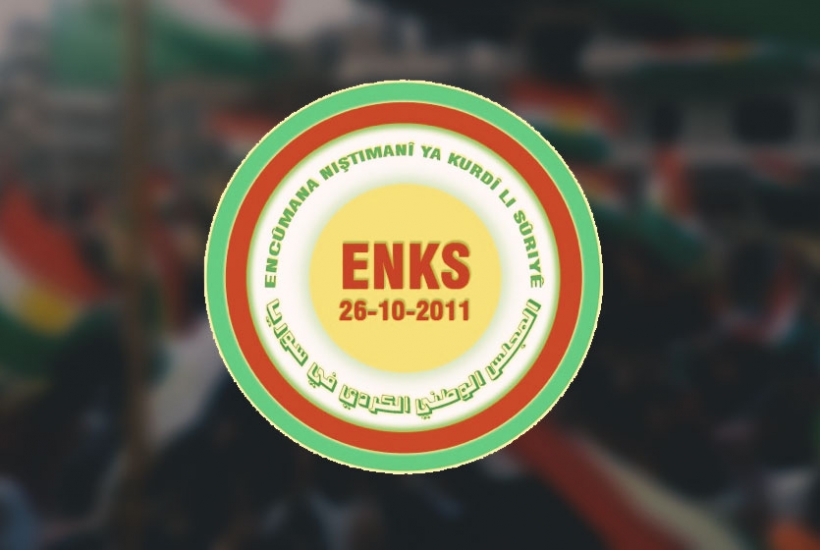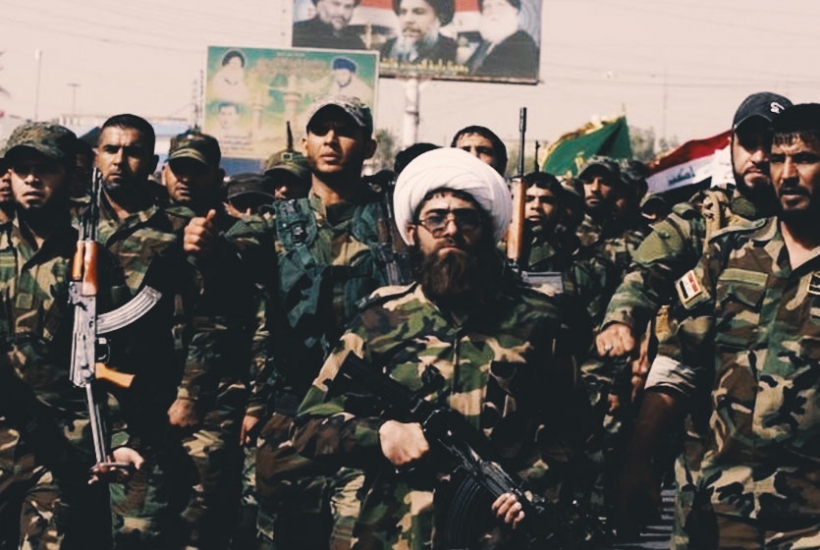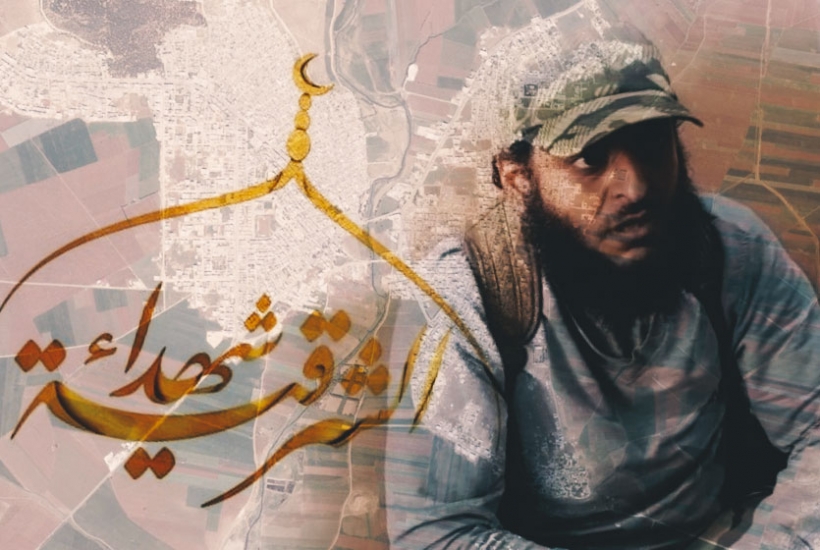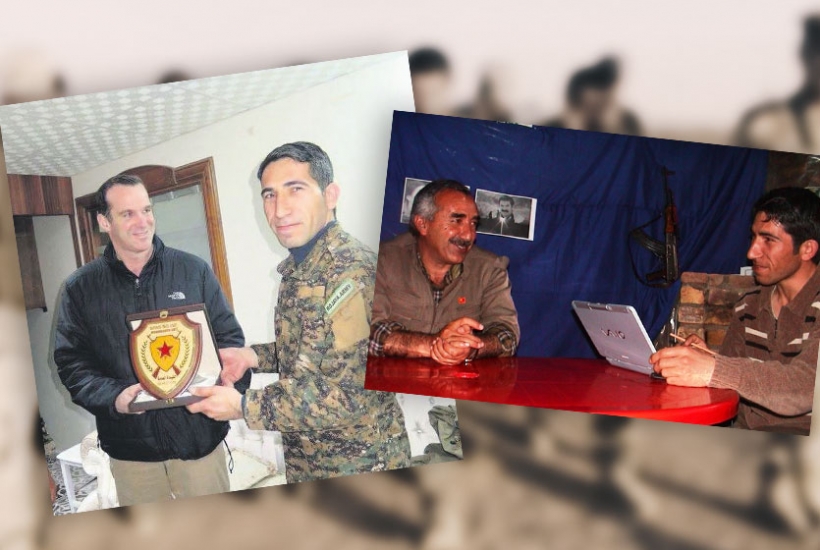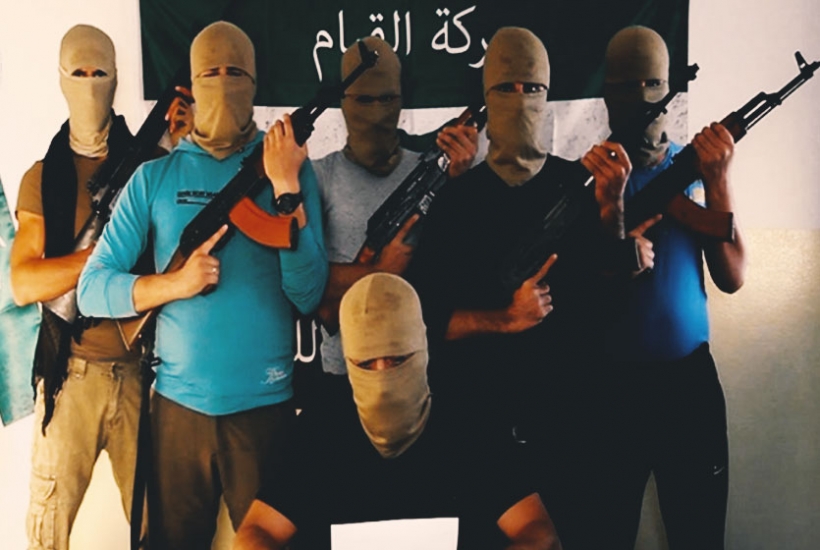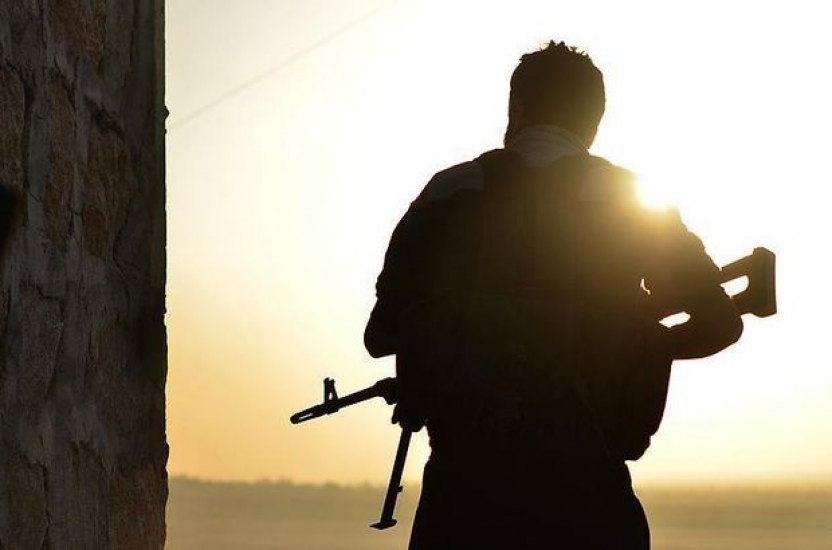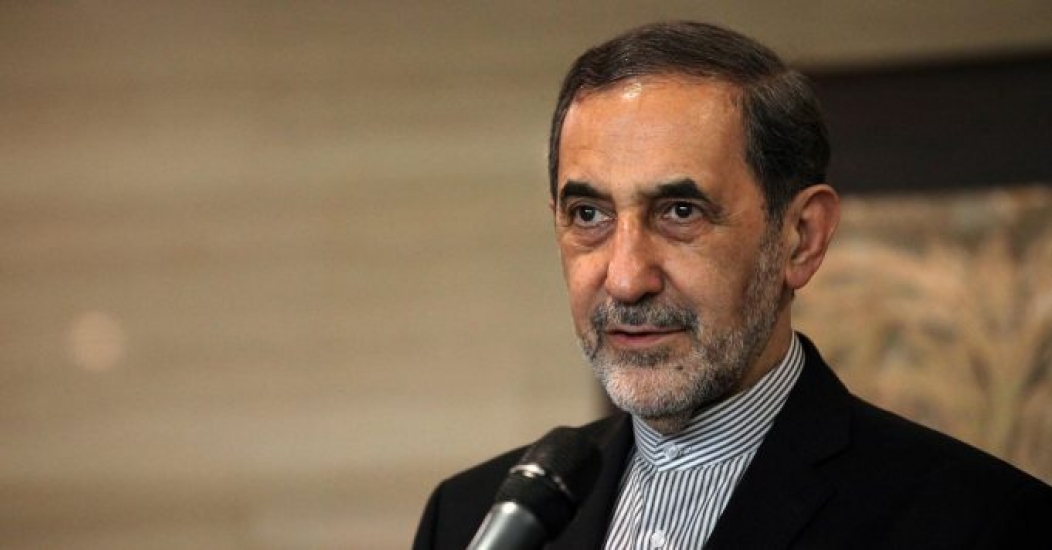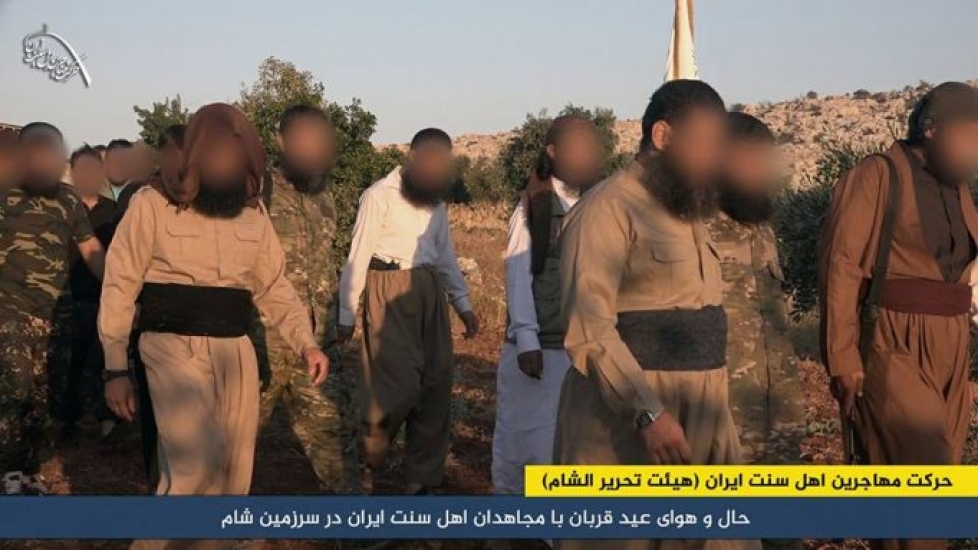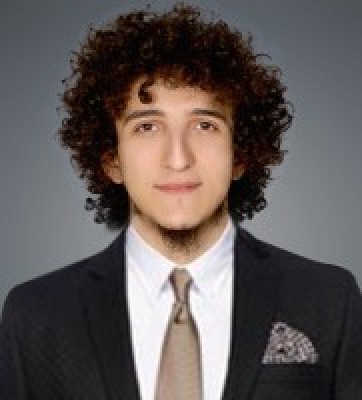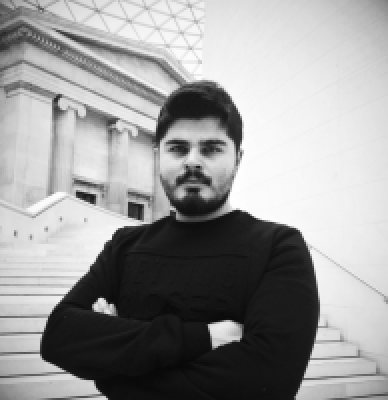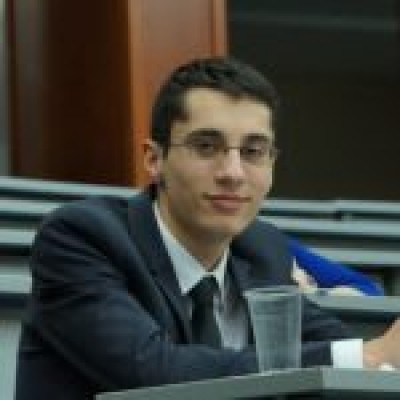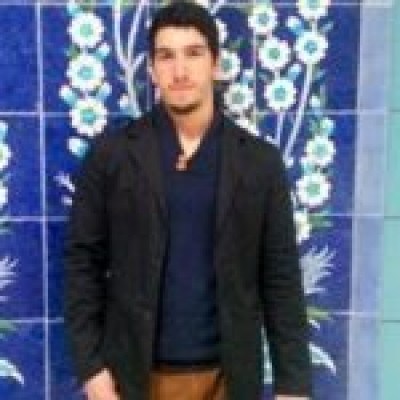Who is Who?
Formation of the Oldest Shiite Militia in Iraq: Badr Organization
Formation of the Oldest Shiite Militia in Iraq: Badr Organization
Founded in 1983, the Badr Organization is the oldest Iraqi Shiite militia organization.
The group is estimated to have at least 20,000 militia forces, who were trained by the Revolutionary Guards Corps (IRGC) during the Iran-Iraq War.
His current commander, Hadi al-Amiri, rebelled against Saddam Hussein in the 1970s and fled to Iran. In the Iran-Iraq War, al-Amiri, who fought in the ranks of Iran, pioneered militia revolts against the regime in Iraq.[i]
Hadi al Amiri, who was the leader of the organization in 1990, changed the former name of the organization, the Badr Brigades to Badr Organization.
Like other Shiite militias, in July 2013 the Badr Organization announced its involvement in the Syrian war.[ii]
In 2015, Hadi al-Amiri announced his commitment to the Iranian Revolutionary Leader Khamenei and to the Shiite revolutionary ideology by saying about Khamenei “not only for Iran, but a leader for the entire Islamic World.” [iii]
The group acted with the slogans: “Iraqi security is endangered until the security of Syria is ensured”, the group supported the pro-Iranian groups in Iraq and was instrumental in the mobilization of pro-Iranian militias in Syria.[iv]
The Badr Organization is active in Aleppo and Damascus, saying that they have contributed 1,500 militia forces to Iran-led forces in Syria.[v]
In 2013, the group started to operate in Damascus, fought in the Sayyida Zainab region. From the beginning of 2014, the largest operations in which the faction took part took place in the Qalamoun Mountains, north of Damascus, near the Lebanese border.[vi]
In October 2016, Moeen al-Kadhemi, deputy head of the Badr Organization, said that the group was considering expanding its operations in Syria after finishing the war with ISIS elements in Iraq.[vii]
The Badr Organization, which is currently under the Popular Mobilization Forces, is both armed and political like Hezbollah, and its leader al-Amiri was also a transport minister in Iraq.
In 2007, Abu Mahdi a-Muhandis, one of the former Badr Organization commanders, founded Kata’ib Hezbollah and became a leader of it.
Source:
[i]Patrick Martin, “Analysis of the Badr Organization”, The Globe and Mail, 12 May 2018.[ii]“Understanding the Organizations Deployed to Syria”, Washington Institute.[iii]Caleb Weiss, “Badr Organization fighters pose with US M1 Abrams tank,” FDD’s Long War Journal, 12 July 2015.[iv]Badr Organization”, Foundation for Defence of Democracies.[v]“Badr Organization”, Foundation for Defence of Democracies.[vi]Guido Steinberg, “The Badr Organization”, SWP, p.7, July 2017[vii]El-Ghobashy, Tamer and Abi-Habib, Maria. “Iraqi Militias Complicate Aleppo Battle; Fighters combating Islamic State at home pour into Syria to support regime’s siege.” The Wall Street Journal, 5 October 2016.
The Kurdish National Council in Syria
The Kurdish National Council in Syria
The Kurdish National Council in Syria was formed on October 26, 2011, in Erbil, Iraq, under the sponsorship of Massoud Barzani, the president of the Kurdistan Democratic Party. [1]
The KNC is an assembly composed of representatives of 11 Syrian-Kurdish political parties as well as members of civil society organisations.[2]
Founding purpose of KNC is to establish a decentralized, parliamentary and democratic Syria State that secures national rights for the Kurdish people.[3]Also they demand to drop the word “Arab” from the country’s official name. The KNC politically identify itself as opposed to the YPG/PYD.[4]
Since 27 August 2013, ENKS has been part of National Coalition of Syrian Revolution and Opposition Forces (SNC). The representatives of ENKS, Abdulhakim Besar and Abdulbasit Hemo are still conducting the vice president duty of SNC.[5]
ENKS executives emphasize that the YPG is not a Kurdish movement. They also state that YPG’s interoperability with the regime hampered the Syrian revolution.[6]However, ENKS does not define YPG as a terrorist organization and this creates problems in its relations with the SNC.[7]
YPG and ENKS, which came together offically for three separate occasions, which are Erbil on June 2012, Hewler on July 2012 and Duhok on September 2014, attempted to unite forces and move together in the regions of Syria where Kurds live, but all of these attemps have failed.[8]
The military wing of the group is called ’Rojava Peshmerga’ and it is entirely under the rule of Massoud Barzani. Approximately 4000 peshmerga are in the Iraqi-Syria border at present.[9]
YPG accusing of ENKS for collaborating with Turkey. In 2016, ENKS leader Ibrahim Biro was arrested by YPG, in 2017 YPG closed all offices that had opened by ENKS in northern Syria.
ENKS published a report and it is stating that 311 violations of rights were carried out by YPG against them between 2012 – 2017, including detention, kidnapping, exile and killing. According to the same report, 52 members and supporters of ENKS were killed by the YPG.[10]
Following the Operation of the Olive Branch, YPG elements raided houses of the executives of the ENKS and abducted their relatives with the accusation that they played a role in the establishment of the local council of Afrin.[11]
In September 2018, ENKS officials held a meeting in Istanbul with Zehra Bill, a US Syrian desk official. During the meeting US representatives suggested to play a mediating role in order to ensure a rapprochement between the YPG and ENKS. ENKS representatives formulated their desire of the return of Rojava Peshmergas to northern Syria.[12]
Source:
[1]http://carnegie-mec.org/publications/?fa=48502[2]http://knc-geneva.org/?page_id=49&lang=en[3]http://en.etilaf.org/coalition-components/national-blocks/kurdish-national-council.html[4]https://www.globalsecurity.org/military/world/para/knc.htm[5]http://tr.etilaf.org/coalition-components/genel-kurul/siyasi-kurul/vice-presidents/abdulbas%C4%B1t-hamu.html[6]https://www.dailysabah.com/syrian-crisis/2016/08/17/western-nations-ignore-rights-violations-by-pyd-head-of-syrias-kurdish-national-council-says[7]https://tr.sputniknews.com/ortadogu/201708041029570204-suriye-enks-ypg/[8]http://www.aljazeera.com.tr/al-jazeera-ozel/pyd-ile-anlasma-nasil-saglandi[9]https://tr.sputniknews.com/roportaj/201703091027557209-rojava-pesmergeleri-nato-enks/[10]http://www.basnews.com/index.php/tr/news/kurdistan/459161[11]https://www.trthaber.com/haber/dunya/ypgpkk-enksnin-eski-baskaninin-yakinlarini-kacirdi-360927.htm[12]https://tr.sputniknews.com/columnists/201809141035202472-abd-heyet-enks-gorusme/
Sadr’s Mahdi Army
Sadr’s Mahdi Army
The Mahdi Army was founded by Muqtada al-Sadr in 2003 during the US invasion of Iraq.
About 300 militias were sent to Hezbollah camps in Lebanon following the establishment of the group.[1]It is claimed that the connection between Hezbollah and the Mahdi Army was established by Iran.
These Iraqi-origin militias were trained in the use of weapons, intelligence and assassination actions in Lebanon.
In the pre- war 2009, in Damascus 30 militias from Mahdi Army were assassinated including senior commanders.[2]
The Mahdi Army, approximately has about 10,000 militias in total, it is believed it has nearly 500 militias in Syria: Damascus, Aleppo and Hama.[3][4]
In contrast to other Iranian-backed Shiite militias who want to preserve the Assad regime, the Mahdi Army is more involved in the protection of the Shiite tombs in Syria.
Mahdi Army claims that it was limited to protecting holy shrines, but it occasionally took part in attacks against the Shiite neighbourhoods and on the offices of the Shiite leaders to defend them.[5]
Sadr, who returned from the Iranian exile, wants to prevent the increasing Iranian influence in Iraq with the emergence of ISIS, and does not accept “vilayat-e faqih” ideology of Iran.
In addition to being the first Iraqi Shiite cleric calling for the Assad regime, Sadr demanded an international investigation against the allegations that Assad had used chemical weapons..[6]
Sadr’s Mahdi Army is a militia group that stands out with its nationalism and is not much involved in the Syrian war. [7]
Qais al-Khazali, the former spokesman of Sadr left the Mahdi Army because of disagreements and established Asa’ib Ahl al-Haq in 2006 then became a leader.
Source:
[1]Bill Roggio “Mugniyah Behind Establishment of Mahdi Army.” The Long War Journal, February 23, 2008.[2]Bill Roggio, “Mahdi Army Members Assassinated in Syria”, Long War Journal, September 21, 2009.[3]http://fsaplatform.org/foreign-shia-militia-map, access of date: October 23, 2018.[4] “Iraqi Shia groups rally in show of power”, Al Jazeera English”, June 22, 2014.[5]Suadad al-Salhy, “Iraqi Shi’ite Militants Fight For Syria’s Assad”, Reuters, November 16, 2012.[6]“Sadr Becomes First Iraqi Shi’ite Leader to Urge Assad to Step Down”, Reuters, April 9, 2017.[7]“Moqtada al-Sadr Urges Assad to Quit”, Middle East Eye, April 8, 2017.
A Gang In Afrin: Shuhada al Sharqiyyah
A Gang In Afrin: Shuhada al Sharqiyyah
Shuhada al Sharqiyyah is a DeirEzzor originated faction which had to flee from its hometown to northwest Syria due to the ISIS threat
After the liberation of Al-Bab from ISIS, Shuhada al Sharqiyyah broke the ceasefire with regime forces at Tadef and started an operation. After this, Ahrar al Sharqiyyah cut its ties to Shuhada al Sharqiyyah, and the faction was disbanded
After the Operation Olive Branch, , Shuhada al Sharqiyyah reorginised itself under the leadership of Abdurrahman el Huseyin known as Abu Hawl, Shuhada al Sharqiyyah
While some claims suggest the faction to have up to 400 fighters, it is estimated that the real numbers may be between 100 and 150.
It is reported that the faction committed several crimes against the local population in Afrin, includin robbery, extortion and other gang activities.
At 19 September, the National Army and Turkish Armed Forces conducted a joint operation and disbanded the faction.
Fighters who tried to resist against the joint operation were killed, others surrendered
Some claims suggest that Shuhada al Sharqiyyah had relations to some intelligience services of regional states who operate against Turkish policies
PKK veteran Polat Can: Commander in the YPG/SDF
PKK veteran Polat Can: Commander in the YPG/SDF
Polat Can is an ethnic Kurd who was born 1980 in Ayn al Arab district of Aleppo province.[1]
In the mid-90s, he took part in the Kandil cadres of the HPG (previously known asARGK). Polat Canis known forhis close relationship with Murat Karayılan, the head of HPG who has rewarded up to 5 million $ on his head by USA.[2]
Turkish books written by Abdullah Öcalan, the founding leader of the PKK, were translatedto Kurdish and Arabic by Polat Can.
Polat Can carried out activities in the media organs close to the PKK, one of them was located in Yerevan/Armenia. Some PKK propaganda outlets in northern Syria like local TV channelsand radio stations were opened by him.
Polat Can has taught and consulted at the Mazlum Dogan Academy which isthe educational center of the PKK.[3]
He is one of the founding members of YPG which has been founded in 2011.Can operated as chiefof the PKK/YPG media organization and served as press spokesman for years.[4]
Polat Can became popular especially in 2014 duringoperations to save Yezidis from Daesh’offensive in Sinjar.[5]
In 2014, he also servedas commander of the YPG in Ayn al Arab against Daesh attacks and he was an important figurein the process tolegitimizeYPG in the world.[6]
At the end of 2015, Polat Can became the representative of YPG against Daesh. He is well-known for his close relationship with the US Special Envoy for Counter-Daesh, Brett McGurk with whom he hasmany pictures together.[7]
Since 2017, he isserving as a field commander in the south regionof the Syrian Democratic Forces in the Deyr ez Zor area.[8]
References:
[1]http://www.ahewar.org/m.asp?i=1338[2]http://www.milliyet.com.tr/sdg-nin-kacan-sozcusu-talal-silo-gundem-2565463/[3]https://nantes.indymedia.org/articles/33734[4]https://www.nytimes.com/2014/10/21/world/middleeast/kobani-turkey-kurdish-fighters-syria.html[5]https://www.bbc.com/news/world-middle-east-28925179[6]https://www.aljazeera.com/indepth/opinion/2014/10/are-kobane-kurds-being-sacrific-201410964423176205.html[7]http://www.milliyet.com.tr/ankara-yi-rahatsiz-eden-goruntu/dunya/detay/2188363/default.htm[8]http://www.turkiyegazetesi.com.tr/dunya/526746.aspx
Known For Their Assassination against YPG / SDG: Qiyam Movement
Known For Their Assassination againstYPG / SDG: Qiyam Movement
The Qiyam Movement was founded in October 2017, and came to the fore with the assassination and sabotage attacks against YPG / SDF elements in Syria.
In its statement, the group pointed out: “We, the Qiyam Movement, call on the Kurdish, Turkmens, Arab and all Syrians to act against the terrorist separatists and their projects. We support the unity and integrity of the country without any external support.”
It is stated that the total capacity of the group is between 100 and 120, mainly based in Manbij. Group members consist of Arabs, Kurds and Turkmens.
The Tall Hamis Brigades, which attempted to assassinate Fehman Hussein, a leader of the PKK, is also a cell of the Qiyam Movement.
The Qiyam Movement also attempted to assassinate the leader of the Manbij Military Council Muhammad Abu Adel and his spokesman Sharvan Dervish.
The group is organised in cell structures. The Qiyam Movement has cells in Qamishli, Raqqa, Hasakah and Manbij.
It is reported that members of the organization previously had experience of war under the umbrella of Free Syrian Army (FSA), and that the group managed to infiltrate the Syrian Democratic Forces (SDF).
Using social media as its main platform for propaganda, the Qiyam Movement declares some of its targets in advance. The group also shares videos and images of its assassinations.
National Liberation Front
National Liberation Front
On the 28th of May 2018 in Idlib and its surroundings, 11 opposition groups announced a merger into the “National Liberation Front”.
Their area of operations is mainly in Idlib and its surroundings. Some of the opposition groups that had participated in Operation Euphrates Shield and Operation Olive Branch, like Faylaq al Sham, Jaish al Nasr and the 23rd Division are part of the merger.
The 11 opposition groups taking part in the merger: Faylaq al Sham, Jaish al Nasr, Jaish Idlib Hur, 1st Coastal Division, 2nd Coastal Division, Fawj al Awwal, Jaish al Sani, Jaish al Nukba, Suheda al Islam Darayya, Firqa al Hurriyah and the 23rd Division.
Jaish Idlib Hur emerged as a merger between the 3rd Division, Shuqour al Jabal and the Shimalliyah Division (all FSA groups) on the 22nd of September 2016. The National Liberation Front’s core is made up of Faylaq al Sham, Jaish al Nasr and the Free Idlib Army. This has also extended to the leadership cadres.
The National Liberation Front’s leader is one of the commanders of Faylaq al Sham, Fadil El Hajji. His deputies and military leaders are Jaish al Nasr’s Suhayb Leyyush and Muhammad Mansur.
According to the National Liberation Front’s statements to media sources, the military capacity of the newly formed coalition is approximately 20.000 fighters.
The National Liberation Front announced on social media that “The new coalition aims at unifying the FSA groups in Syria’s Idlib under a single umbrella”.
While important rebel groups like Jaish al Izzah, Jaish al Ahrar and Suqour al Sham were said to be joining the National Liberation Front, the fact that they did not drew attention.
Ali Akbar Velayeti: Iran’s Foreign Minister of Crisis
Ali Akbar Velayeti: Iran’s Foreign Minister of Crisis
Born in 1945 in the town of Shemiran in Iran’s Tehran province, Ali Akbar Velayeti serves as a senior advisor on international affairs for Iranian Supreme Leader, Ali Khamenei. Velayeti received his undergraduate medical training at the Tehran University of Medical Sciences, continuing on a master’s degree at Johns Hopkins University. He held the position of deputy minister of health of the newly founded Islamic Republic between 1980 and 1981, after which he served as foreign minister under the Khamenei and Rafsanjani presidencies until 1997.[1] Having held and served in 38 different political, cultural, and medical posts simultaneously, including membership of the Expediency Council, Ali Akbar Velayeti represents a highly seasoned official of the Islamic Republic of Iran.[2]
Ali Akbar Velayeti has been a critical figure pursuing Iranian diplomatic ties throughout the Syrian civil conflict. In 2015, Velayeti stated “Were we not facing the enemy in Syria, we would be fighting them in Iran” adding, “America believes that Syria is the weak link of the axis of resistance, whereas it is its golden link”. [3] In a different statement, Velayeti said, “If the Islamic Republic had not come to the aid to the Syrian government, this government would have fallen” and that Assad represented Iran’s “red line”. [4]
Following the capture of the Daesh stronghold of Raqqa by the US-backed Syrian Democratic Forces, Velayeti announced from Beirut that the Syrian Army would advance to Raqqa[5], and that rebel-held Idlib would be the next target after the acquisition of Eastern Ghouta.[6]
Velayeti described as murder the Isreali strike on the T-4 airbase in Homs in which 7 Iranian Revolutionary Guards were killed, and said that these attacks would not be left unanswered.[7]
During a 2017 meeting with the Syrian Minister of Education, Velayeti announced plans to make Syria the regional center of the Iran-based Islamic Azad University, as well as the planned openings of branches of the institution in Damascus, Aleppo, and Latakia. The Islamic Azad University currently has overseas branches in Lebanon, Afghanistan, the UK, and the UAE.[8]
Ali Akbar Velayeti has been known to be sent by Iran’s supreme leader to hold meetings at the level of foreign minister with Syrian officials during periods of heightened tension during the war. Velayeti’s diplomatic visits to Beirut, Baghdad, and Damascus have been more frequent than those of Iran’s Foreign Minister, Javad Zarif.
Footnotes:
[1]http://hamshahrionline.ir/details/59893
[2]http://etemaadonline.ir/content/147172/%D8%A7%DB%8C%D9%86%D9%81%D9%88%DA%AF%D8%B1%D8%A7%D9%81%DB%8C%DA%A9–%D9%88%D9%84%D8%A7%DB%8C%D8%AA%DB%8C-72-%D8%B3%D8%A7%D9%84%D9%87%D8%9B-%D9%85%D8%B1%D8%AF%DB%8C-%D8%A8%D8%A7-38-%D9%85%D8%B3%D8%A6%D9%88%D9%84%DB%8C%D8%AA
[3]http://www.ana.ir/news/72884
[4]http://www.dw.com/fa-ir/%D9%88%D9%84%D8%A7%DB%8C%D8%AA%DB%8C-%D8%A7%D8%B3%D8%AF-%D8%AE%D8%B7-%D9%82%D8%B1%D9%85%D8%B2-%D8%AC%D9%85%D9%87%D9%88%D8%B1%DB%8C-%D8%A7%D8%B3%D9%84%D8%A7%D9%85%DB%8C-%D8%A7%D8%B3%D8%AA/a-18897644
[5]http://www.bbc.com/persian/world-41862223
[6]http://farsi.alarabiya.net/fa/middle-east/2018/04/12/%D9%85%D8%B4%D8%A7%D9%88%D8%B1-%D8%AE%D8%A7%D9%85%D9%86%D9%87-%D8%A7%DB%8C-%D9%BE%D8%B3-%D8%A7%D8%B2-%D8%BA%D9%88%D8%B7%D9%87-%D8%AF%D9%85%D8%B4%D9%82-%D8%A7%D8%AF%D9%84%D8%A8-%D8%B1%D8%A7-%D8%AA%D9%87%D8%AF%DB%8C%D8%AF-%DA%A9%D8%B1%D8%AF.html
[7]http://www.bbc.com/persian/iran-43712039
[8]http://velayati.ir/fa/news/2319/%D8%B3%D9%88%D8%B1%DB%8C%D9%87-%D9%85%DB%8C%E2%80%8C%D8%AA%D9%88%D8%A7%D9%86%D8%AF-%D9%85%D8%B1%DA%A9%D8%B2-%D9%81%D8%B9%D8%A7%D9%84%DB%8C%D8%AA%E2%80%8C%D9%87%D8%A7%DB%8C-%D9%85%D9%86%D8%B7%D9%82%D9%87%E2%80%8C%D8%A7%DB%8C-%D8%AF%D8%A7%D9%86%D8%B4%DA%AF%D8%A7%D9%87-%D8%A2%D8%B2%D8%A7%D8%AF-%D8%A7%D8%B3%D9%84%D8%A7%D9%85%DB%8C-%D8%A8%D8%A7%D8%B4%D8%AF
Movement of Iranian Ahl Al Sunnah Muhajirs
Movement of Iranian Ahl Al Sunnah Muhajirs
While Salafism is not particularly widespread in Iran’s Sunni regions, the country has seen increased activity of organizations such as Al Qaeda and Ansar al Islam from the late 1990s to the mid-2000s, especially in the Kurdish northwest. Between 2001 and 2003, Ansar al Islam saw a surge in popularity in Iran’s Kurdish regions after expanding its influence in neighboring Iraq, allowing the group to intensify its incursions into the Kurdish Regional Government. As Ansar al Islam lost territory, the Al Qaeda Kurdish Battalions were established, recruiting fighters from among the Kurds of Iraq and Iran to conduct suicide attacks in Erbil and Sulaymaniyah. Reports have since emerged of large numbers of Iranian nationals traveling to Taliban and Al Qaeda training camps in Afghanistan and Pakistan after 2008.
After 2011, it is known that many Iranians of Jihadi Salafi persuasion crossed into Syria. Rejecting Daesh’s call to all groups operating within its territory to submit to the group, most Iranian fighters opted to travel to Nusra dominated areas after 2014. As their numbers grew, Iranians among the ranks of Jabhat al Nusra grouped together under the mantle of “Guardians of the Ummah”, in reference to the IRGC-aligned “Guardians of the Shrine”, a Shia militia purporting to safeguard the tomb of Sayyidah Zainab in Damascus.1
In 2016, Iranian fighters of the Syrian Ansar al Islam broke off and founded the “Movement of Iranian Ahl al Sunnah Muhajirs”. By the summer of the same year, the nearly 200-strong grouphad become a separate faction under the Nusra-dominated Hayat Tahrir al Sham (HTS). During the 2017 offensive initiated by the HTS in northern Hama, aka Operation “Tell them to Work/WaKolE’emalo” (Quran 9:105), the Muhajirs incurred their heaviest lossesas yet,including two of the group’s Jurists of Shariah law, Mawlawi Abd al Karim al Balushi and Mamosta Abu Bakr al Kurdi, in December 2017.2 The Muhajirs comprise of chiefly Kurdish and Baluchi members, along with Persians, Turkmen, and Arabs of the Ahwaz region of Iran. The group has lately enhanced its social media activities, placing the slogan “Presenting the Institution of al-Qādisiyyah” on its posts.3 Abd al Rahman Fattahi, the leader of the Movement, was born in Mokryan in the region of Mahabad in Iran. Fattahi, who had previously been imprisoned in Karaj in 2010, traveled to Syria after his release. 4
The Movement of Iranian Ahl al Sunnah Muhajirs has also issued statements on matters outside of the Syrian Civil War. Such examples include the condemnation of the recognition of Jerusalem as the capital of Israel, support for the protests erupting in Iran in December 2017, and vows of revenge for the execution of a number Iranian Sunnis.5
Iranian Sunnis also fight under the banners of various Syrian groups such as Ahrar al Sham and Faylaq al Sham, however the Muhajirs set themselves apart from these as they are comprised exclusively of Iranians. There also exist other externally-basedIranian opposition groups, including the left-leaning People’s Mujahedin, the Democratic Party of Iranian Kurdistan, and PJAK. The Movement of Iranian Ahl al Sunnah Muhajirs is unprecedented as a sectarian, externally-based group of entirely Iranian membership opposing the government of Iran.
The Syrian Turkmen Assembly
The Syrian Turkmen Assembly
Before 2011, the Turkmen of Syria were not able to organize under a common political leadership due to suppression by the Assad regime.
With the outbreak of the Civil War in 2011, the Syrian Turkmen organized from Turkey due to its proximity, linguistic and cultural bonds, the presence of a Turkmen diaspora, and Turkey’s support for the opposition movement.
The first Turkmen political organizations were the Syrian Democratic Turkmen Movement and the Syrian Turkmen Mass, both founded in 2011.
The Syrian Turkmen Platform was also established in 2012 under the initiative of Syrian Turkmen living in Turkey.
On December 15th, 2012, the Syrian Turkmen Platform gathered more than 1200 of their fellow Turkmen to Istanbul in order to deliberate on issues of concerns and the future of the Turkmen in Syria as a group. The meeting resolved to establish the Syrian Turkmen Assembly from delegates to be elected from within Syria, as a legitimate representative body to engage in all negotiations with other parties.
As per this resolution, the Syrian Turkmen Assembly was founded during the Ankara Conference of March 30th, 2013, with the participation of then-Prime Minister of Turkey, Recep Tayyip Erdoğan and the votes of 400 Turkmen delegates.
With the participation of Turkish officials, Syrian opposition figures, and foreign representatives, this conference represents a critical turning point in the history of the Turkmen of Syria.
Dr. Muhammad WajihJuma was elected as chairperson of the body on February 10th, 2018, during its fourth general assembly.
The Syrian Turkmen assembly comprises of 42 representatives elected by 420 delegates from three Turkmen parties and independent delegates from the Aleppo-Idlib, Bayirbucak (Latakia-Tartus), Hama-Homs, Damascus-Golan and Raqqa regions. The Chairperson is elected from among the Assembly’s representatives.
The Syrian Turkmen Assembly is made up of 6 main bodies:
The General Assembly
The Turkmen Committee
The Executive Committee
The Consultation Committee
The Disciplinary Committee
The Elective Committee
The Syrian Turkmen Assembly continues to be active in both Syria and Turkey. The Assembly currently has offices in Istanbul; Yayladağı, Hatay; Gaziantep; Osmaniye; and the Euphrates Shield region.
The Syrian Turkmen Assembly is represented in the National Coalition for Syrian Revolutionary and Opposition Forces.
The officially declared objectives of the Syrian Turkmen Assembly are:
To guarantee the safe return of Syrian Turkmen to their lands from which they were forcibly removed,
To guarantee the linguistic, political, cultural, economic, and social rights of Syrian Turkmen in post-war Syria, within the framework of constitutionalism and international law,
To ensure the formation of a post-war administration through democratic, fair, and transparent elections,
To establish a constitutional system after the conclusion of the Syrian conflict in which all groups can live together in peace and harmony.


